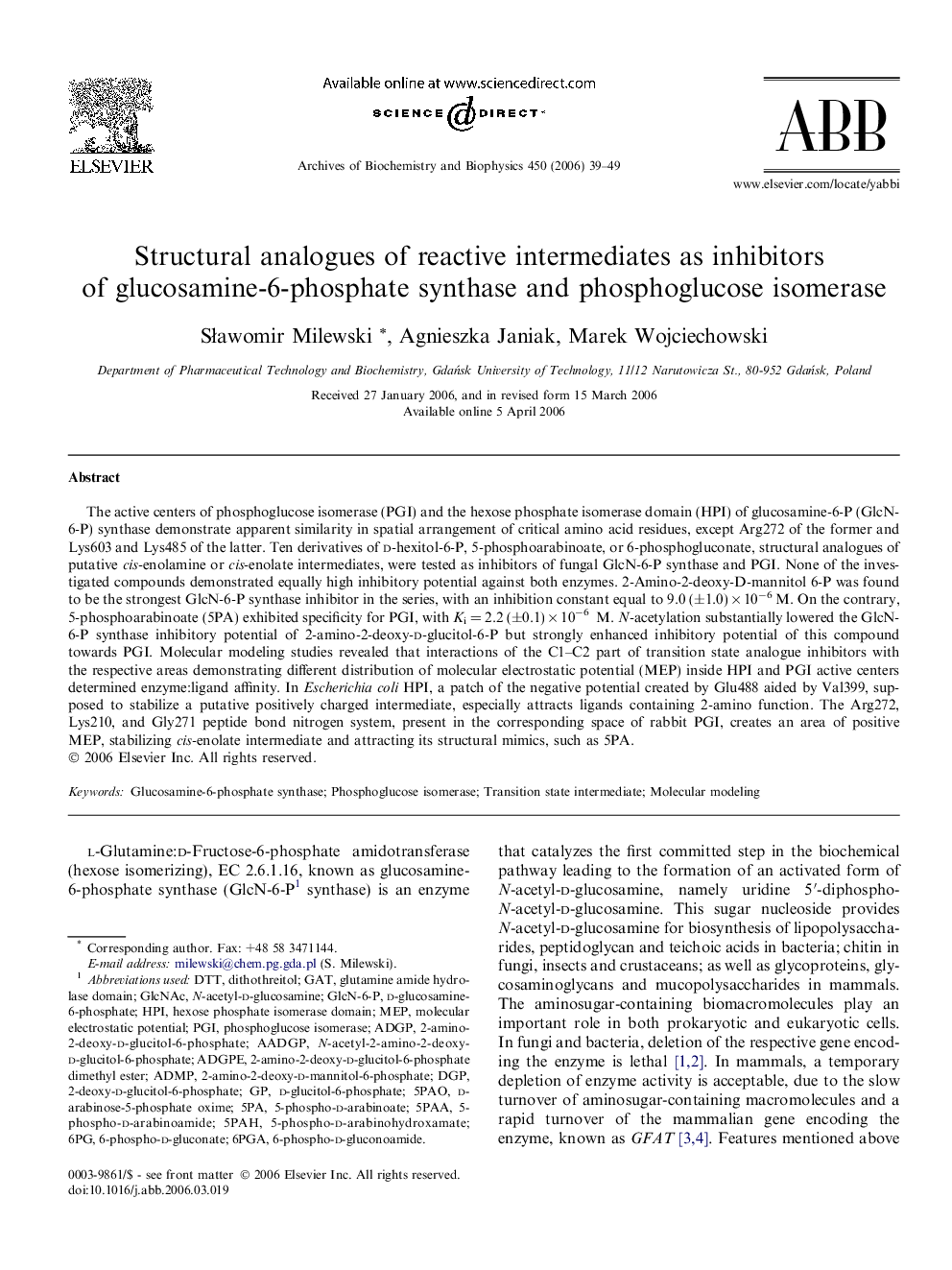| Article ID | Journal | Published Year | Pages | File Type |
|---|---|---|---|---|
| 1927554 | Archives of Biochemistry and Biophysics | 2006 | 11 Pages |
The active centers of phosphoglucose isomerase (PGI) and the hexose phosphate isomerase domain (HPI) of glucosamine-6-P (GlcN-6-P) synthase demonstrate apparent similarity in spatial arrangement of critical amino acid residues, except Arg272 of the former and Lys603 and Lys485 of the latter. Ten derivatives of d-hexitol-6-P, 5-phosphoarabinoate, or 6-phosphogluconate, structural analogues of putative cis-enolamine or cis-enolate intermediates, were tested as inhibitors of fungal GlcN-6-P synthase and PGI. None of the investigated compounds demonstrated equally high inhibitory potential against both enzymes. 2-Amino-2-deoxy-D-mannitol 6-P was found to be the strongest GlcN-6-P synthase inhibitor in the series, with an inhibition constant equal to 9.0 (±1.0) × 10−6 M. On the contrary, 5-phosphoarabinoate (5PA) exhibited specificity for PGI, with Ki = 2.2 (±0.1) × 10−6 M. N-acetylation substantially lowered the GlcN-6-P synthase inhibitory potential of 2-amino-2-deoxy-d-glucitol-6-P but strongly enhanced inhibitory potential of this compound towards PGI. Molecular modeling studies revealed that interactions of the C1–C2 part of transition state analogue inhibitors with the respective areas demonstrating different distribution of molecular electrostatic potential (MEP) inside HPI and PGI active centers determined enzyme:ligand affinity. In Escherichia coli HPI, a patch of the negative potential created by Glu488 aided by Val399, supposed to stabilize a putative positively charged intermediate, especially attracts ligands containing 2-amino function. The Arg272, Lys210, and Gly271 peptide bond nitrogen system, present in the corresponding space of rabbit PGI, creates an area of positive MEP, stabilizing cis-enolate intermediate and attracting its structural mimics, such as 5PA.
